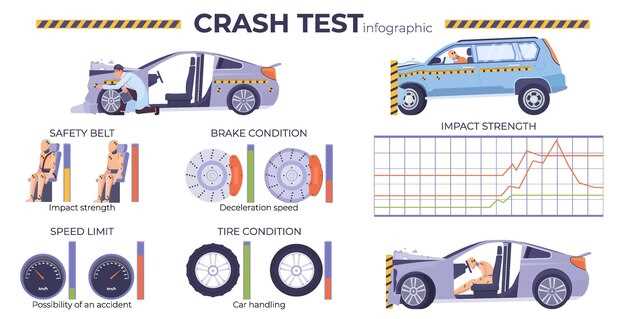
In the realm of driving, mastering various braking techniques is crucial for maintaining optimal vehicle control during different driving conditions. Understanding the intricacies of braking not only enhances safety but also empowers drivers to respond adeptly in emergency situations. Taking the time to learn these techniques can make a significant difference in how effectively one can navigate unexpected challenges on the road.
Modern vehicles are often equipped with advanced systems such as ABS (Anti-lock Braking System), which aid in preventing wheel lock-up during hard braking scenarios. However, even with these technological advancements, it is the driver’s skill in using the brakes judiciously that plays a pivotal role in achieving better control. Proper application of pressure and understanding the dynamics of the vehicle can help in maximizing the benefits of ABS and ensuring a safe stop.
In this article, we will explore various braking techniques that can enhance vehicle control, focusing on both traditional methods and modern systems. By honing these skills, drivers can not only improve their safety on the road but also gain a deeper appreciation for the mechanics of their vehicles, paving the way for a more confident driving experience.
Understanding ABS: How It Works and Benefits for Drivers

Anti-lock Braking System (ABS) is a crucial safety feature in modern vehicles designed to prevent the wheels from locking up during emergency braking situations. By maintaining traction with the road surface, ABS allows drivers to maintain steering control even when braking force is maximized. This system is essential for enhancing vehicle control, especially in adverse weather conditions or during abrupt stops.
The functionality of ABS is based on a series of sensors, a control unit, and hydraulic brake actuators. When a driver applies the brakes, sensors continuously monitor the wheel speed. If a wheel begins to decelerate too quickly and approaches locking, the ABS control unit automatically reduces brake pressure to that wheel, allowing it to continue rotating. This process occurs rapidly, typically several times per second, resulting in a pulsing sensation in the brake pedal that signals the system’s engagement.
One of the primary benefits of ABS is improved vehicle stability during sudden stops. In emergency situations, drivers can apply the brakes fully without fear of losing control. This reduced risk of skidding is especially advantageous on slippery surfaces, where traditional braking methods might lead to uncontrollable slides. Additionally, ABS promotes shorter stopping distances under certain road conditions, further enhancing safety.
Moreover, ABS allows drivers to steer while braking, providing the ability to navigate obstacles more effectively during emergencies. This feature is particularly important in high-stress situations, where maintaining control is paramount. By preventing wheel lock-up, ABS helps avoid accidents caused by loss of steering ability.
In summary, understanding how ABS works empowers drivers to utilize this technology effectively. Familiarizing oneself with the characteristics of ABS can lead to enhanced safety, improved vehicle control, and greater confidence in emergency braking scenarios.
Emergency Braking: Step-by-Step Guide for Critical Situations
In critical situations, effective emergency braking can significantly reduce the risk of accidents. Follow these steps to ensure proper execution when the need arises:
1. Stay Calm: In a sudden emergency, maintaining composure is crucial. Panic can lead to poor decision-making. Take a deep breath and focus on the task at hand.
2. Assess the Situation: Quickly evaluate the scenario ahead. Determine the distance between your vehicle and any obstacles or other vehicles. Understanding the dynamics of the situation can help you decide how aggressively to brake.
3. Firmly Press the Brake Pedal: Apply maximum pressure to the brake pedal without exceeding your vehicle’s braking capabilities. This action activates the anti-lock braking system (ABS) if equipped, which prevents wheel lock-up, allowing for better control.
4. Avoid Sudden Steering: While braking, maintain a straight trajectory if possible. Sudden steering can lead to skidding or loss of control. If necessary, gently steer the vehicle after initial braking to avoid obstacles.
5. Use Engine Braking (if applicable): In addition to pressing the brake pedal, downshift to a lower gear. This technique allows the engine to assist in slowing down the vehicle, providing additional braking force.
6. Be Aware of Your Surroundings: Continuously scan your environment for potential hazards. Check mirrors and blind spots to anticipate reactions from other drivers.
7. Prepare for Aftermath: Once the vehicle has come to a stop, ensure that your surroundings are safe before exiting the vehicle. Use hazard lights to alert others to the situation if necessary.
Effective emergency braking requires practice and familiarity with your vehicle’s systems. Regularly review your braking techniques and stay prepared to respond calmly in critical situations.
Optimal Braking Techniques for Different Road Conditions

Effective braking is crucial for vehicle control, especially when considering varying road conditions. Different surfaces can significantly affect the braking performance of a vehicle. Below are optimal braking techniques tailored for specific road environments.
Dry Pavement: On dry roads, employing ABS (Anti-lock Braking System) is highly effective. With ABS, drivers can press the brake pedal firmly while maintaining steering control. The system prevents wheel lock-up, thus allowing for shorter stopping distances and enhanced maneuverability. It is essential to modulate the brake pressure, applying a steady force until the vehicle comes to a complete stop.
Wet or Slippery Roads: When driving on wet or slippery surfaces, the risk of skidding increases. In this scenario, gradually applying the brakes while maintaining traction is vital. The use of ABS becomes advantageous, as it helps to prevent wheel lock-up. Drivers should adopt a technique known as “threshold braking,” where they apply maximum pressure just before losing grip, allowing for controlled deceleration.
Icy Conditions: Icy roads require a more cautious approach. It is recommended to avoid sudden braking, which can lead to loss of control. Instead, drivers should use gentle, gradual braking. Keeping a greater distance from the vehicle ahead allows more time to react. If equipped with ABS, drivers should still employ smooth braking; however, if wheels begin to slide, ease off the brake pedal to regain traction.
Gravel or Loose Surfaces: On gravel or loose surfaces, braking techniques shift significantly. To avoid skidding, drivers should brake gently before reaching the surface and then reduce speed through controlled momentum rather than heavy braking. Maintaining a firm grip on the steering wheel is crucial, as the vehicle may respond unpredictably. Allowing for increased stopping distances will enhance overall control.
Conclusion: Understanding optimal braking techniques specific to road conditions enhances vehicle control and safety. Utilizing ABS when appropriate and adjusting braking pressure can mitigate risks associated with various surfaces, ensuring a safer driving experience.
